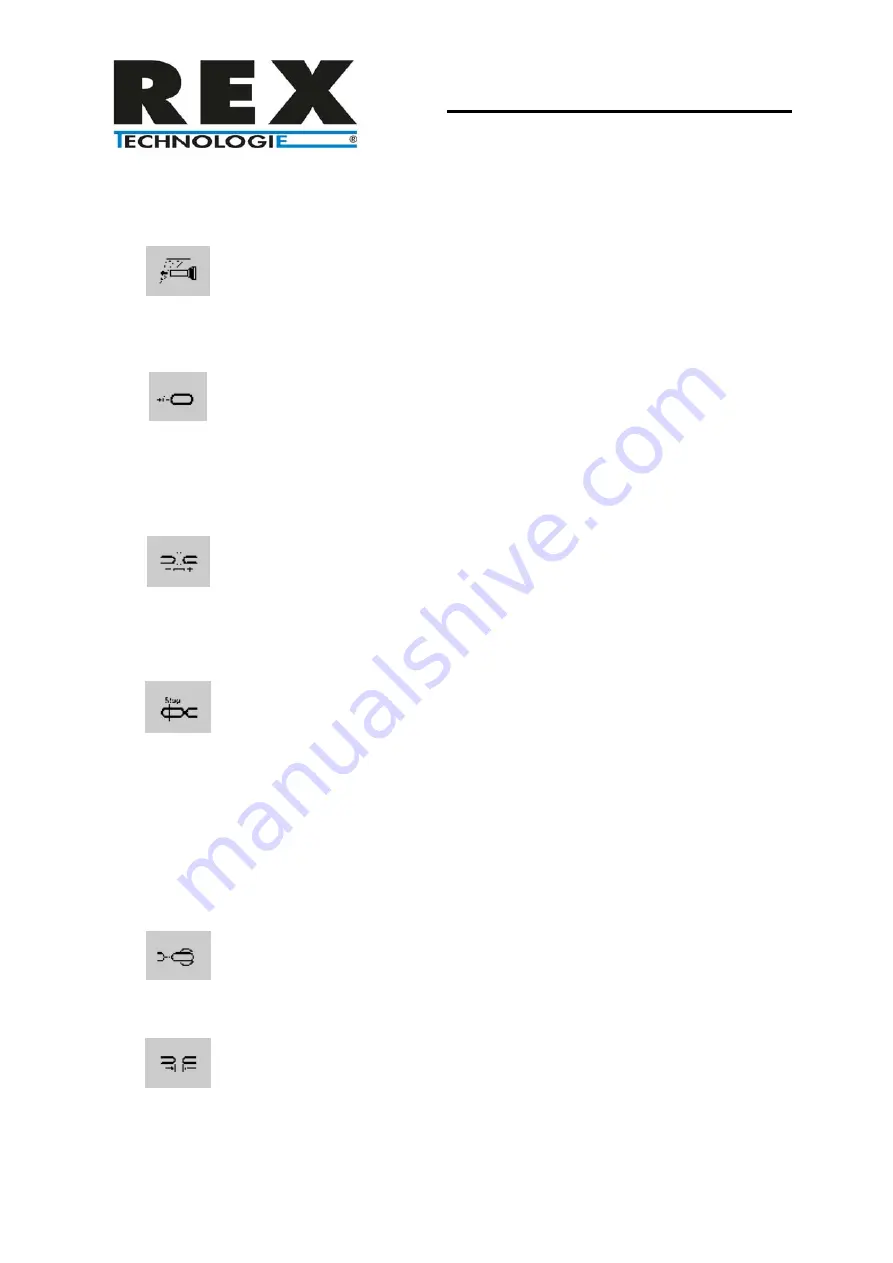
RVF 327, 327 S, 330, 330 S
ex no. 1200
Operation of the vacuum filling
machine
Version 1.5
page 57 of 144
4.5.7
Ramp filling meat pump
Here you can adjust the filling output to either harder or softer, (adjust-
ment range of 10-150 %). Too hard of a filling output can lead to burst-
ing of the skins, or to pear shaped sausages, and too soft of a filling
output can result in too small of a portion output.
4.5.8
Weight correction
Here you can adjust the turned out volume to match the actual volume
(adjustment range of –200 to 200 cm³).
i.e. The adjusted amount in the input field has a weight of 100 cm³, the
filled weight equals 93 g (= 100 cm³) You can resolve to change more
than
+7 cm³ in order to reach the desired 100 g.
4.5.9
Advancing/lagging Clip impulse
This amount (adjustment range of –200 to 200 ms) determines the ext
time as to how long before and after the filling of a portion den the Clip
machine has been started. The installation of both the before and after
curing (advance and lagging) influences the stroke rate of the Clip ma-
chine, and in this way, also the number of portions.
4.5.10
Portion interruption off/on
Portion interruption – deactivated.
If the knee lever is released during the filling of a portion (with single
portioning) and contacted a second time (with continual portioning, ,
piece orders) the conveyor usually doesn’t stops immediately, but rather
completes the already begun Portion until the end of.
Portion interruption – active.
If the portion interruption is nevertheless activated for the respective
program and the operator presses the knee lever during the filling pro-
cedure, and with the clip machine the “emergency shut-off switch, then
the conveyor stops immediately. The started portioning will not be filled
completely.
4.5.11
Twisting off
The adjusted amount (adjustment range of 1to 15 twisting s) determines
the number of twisted off pieces after the end of the portioning.
4.5.12
Twist-off position
Pause between end of filling portion and start of twisting off in ms
Can also be negative, i.e. filling and twisting overlap.
















































